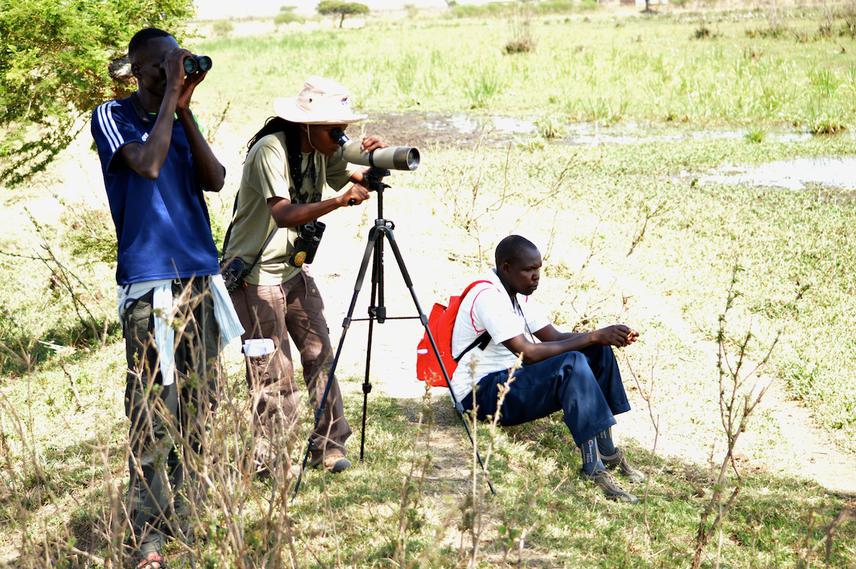Martha Nzisa Mutiso
Other projects
13 May 2014
Promotion of an Advocacy and Environmental Management Strategy for Sawaiti (Barina) Wetland
The aim is to create awareness and build capacity to local community on the protection and sustainable utilization of the wetland.

Waterfowl Census-Sawaiti Wetland January 2015.
Sawaiti is a wetland found in Mogotio town, North Rift of Kenya (S00º01.082’; E035º56.757’). It is habitat to several threatened bird species, including Grey Crowned Crane, Madagascar Pond Heron, Saddle-billed Stork, and Imperial Eagle and other biodiversity. The wetland covers an area of 320 acres and borders the protected Lake Bogoria National Reserve, a World Heritage site by the United Nations Educational, Scientific and Cultural Organization (UNESCO). Sawaiti therefore plays an important role as a refuge and corridor for migrants and other species from Lake Bogoria and is also a buffer zone for the larger protected wetland. Unlike Lake Bogoria National Reserve, Sawaiti faces a myriad of environmental challenges from anthropogenic activities and climatic conditions. Land fragmentation, change of land use, over grazing, pollution and climate change owing to the Ecosystem services it provides. These services are under threat as there is more pressure from the community due to perception and negative attitude of wetlands as “wastelands” leading to a disregard of the ecological and socio-economic benefits.
According to the Mogotio social services department, 85% are poor and do not have a steady source of income and therefore practicing subsistence farming (livestock and food crop). This has led to the encroachment and over-exploitation of the wetland to support the rising population and the demand of farming land. Therefore an integrated approach of conserving and protecting the fragile ecosystem while proving the necessary ecosystem services to the community involving ecotourism, Avi-tourism, cultural tourism, sustainable agriculture and community conservation initiatives.
The project’s main goal is to see Sawaiti wetland protected and gazetted as part of Important Biodiversity Areas in Kenya by enhancing the ecosystem services provided by the wetland. Assessment of these ecosystem services will be done through Rapid rural Appraisals, while trained youth leaders in the community will do inventory on the ecosystem. The project also aims to create awareness and build capacity to the local community on the protection and sustainable utilization of the wetland and thereby a change of attitude with regard to wetlands as wasteland.